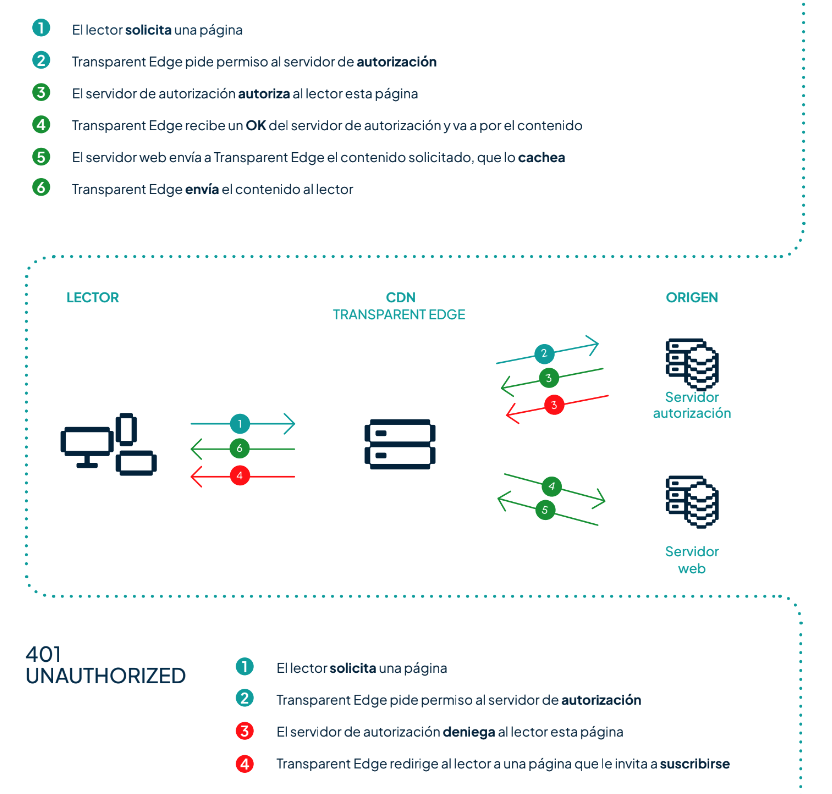Three benefits of implementing a paywall at the edge

23 Nov 23

A paywall is a system that limits access to online content by requiring users to pay a subscription, either by restricting the number of articles they can read or by directly conditioning the delivery of content. In this post, we review the benefits of implementing it through edge logic, which is one of the currently available options.
Paywalls have become a very popular tool for monetizing digital content, and it is estimated that 70% of media outlets in Europe and the United States use this resource.
There are different types: hard, medium, freemium, soft, etc. Some of them are very simple to implement, but they are usually more susceptible to being overridden by disabling JavaScript with extensions or tricks accessible to people with technical knowledge.
For a media outlet, this not only affects a loss of profitability but also a reputational aspect, as both information and images could be read and replicated by third parties, nullifying their exclusivity.
For this reason, paywalls have become increasingly sophisticated over time. One of the main changes implemented has been their location in the technological infrastructure: traditionally established at the source, they are increasingly being placed at the edge. Why?
200 OK
The registered user requests the content they want to consume. The Transparent Edge CDN receives the request and requests permission from the authorization server. Since the server has registered the user, it authorizes them to serve the resource. This means that the CDN receives approval and requests the content from the web server, which sends it. The content is cached by the CDN if the client so desires. The CDN then sends the content to the end user, who receives it with an HTTP 200 OK code.

401 UNAUTHORIZED
The identification steps are the same if the user is not registered. The moment the flow changes is when the authorization server cannot find the user’s registration. It then sends a 401-error code to the CDN, which receives it and transmits it to the end user.
Many of Transparent Edge’s clients have paywall solutions. The Technology team proactively identified tools that could bypass a specific client’s paywall. All options were analyzed to uncover the vulnerabilities, and, together with the client’s team, solutions were established to neutralize the breach. If you’d like to learn more about this specific case and how to set up an effective CDN strategy, please contact us.